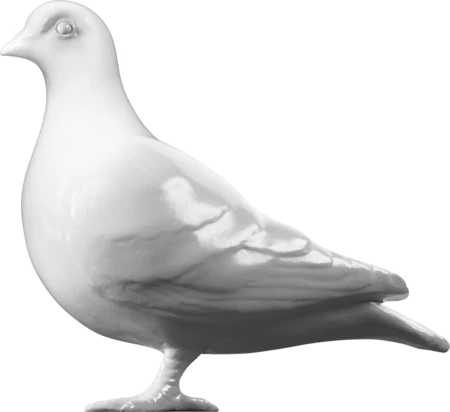Decorative arts — 1715; 18th century
South Sea Company cup
The South Sea Company was a joint stock company founded in 1711 during the War of the Spanish Succession. Its headquarters were at South Sea House on Threadneedle Street in the City of London. The Company was established on the basis that it would enjoy a post-war monopoly on trade with Spanish colonies in South America. The terms of the Treaty of Utrecht did not prove as advantageous as the Company had hoped. Spain imposed restrictions on its main business, the trade in enslaved Africans. The Company's first voyage did not take place until 1717.
Despite its modest success many prominent figures in Georgian society invested in the Company and George I himself became a governor in 1718. Parliament also agreed to convert significant portions of the national debt into Company shares. With the Company's stock low, the directors exaggerated its successes in order to generate more investment. Share prices began to rise, peaking at over £1000 in August 1720. The following month the market crashed and many of the Company's investors were ruined as the 'South Sea Bubble' burst. A House of Commons investigation revealed high level corruption in both the Company and the British government.
This silver gilt cup is part of a set engraved with the South Sea Company's arms. The Company's Minute Book for 1714-16 records a payment of £63.13 to William Brassey for a cup and salver. Brassey would probably have procured the cup and salver on the Company's behalf. The manufacturer, Thomas Farren, originally came from Tewkesbury in Gloucestershire. He became a Freeman of the Goldsmiths' Company in 1707 and was elected to the Livery in 1721. He later became Subordinate Goldsmith and Plateworker to the King between 1723 and 1742.
The South Sea Company continued to trade until 1853. On 20th July 1855 the Company's Court authorised the Sub-Governor, Charles Franks, to 'dispose of the pictures, furnitures, and effects of the Company'. It is probable that the cup and salver were sold off along with the other 'effects' from South Sea House.
- Category:
- Decorative arts
- Object ID:
- 83.357/2
- Object name:
- South Sea Company cup
- Object type:
- Artist/Maker:
- Farren, Thomas
- Related people:
- Related events:
War of the Spanish Succession 1701-1714, Peace of Utrecht 1713, South Sea Bubble 1720
- Related places:
St Swithin's Lane, City of London, London [City of London], City of London
- Production date:
- 1715; 18th century
- Material:
silver, gilt
- Measurements/duration:
- H 196 mm, DM 182 mm, W 305 mm (including handles), H 370 mm, H 206 mm, W 305 mm, DM (rim) 181 mm, DM (base) 123 mm (overall)
- Part of:
- —
- On display:
- —
- Record quality:
- 100%
- Part of this object:
- —
- Owner Status & Credit:
Permanent collection
Purchased with the assistance of the National Heritage Memorial Fund, the Art Fund, The Goldsmiths' Company and The Pilgrim Trust.
- Copyright holder:
digital image © London Museum
- Image credit:
- —
- Creative commons usage:
- —
- License this image:
To license this image for commercial use, please contact the London Museum Picture Library.

